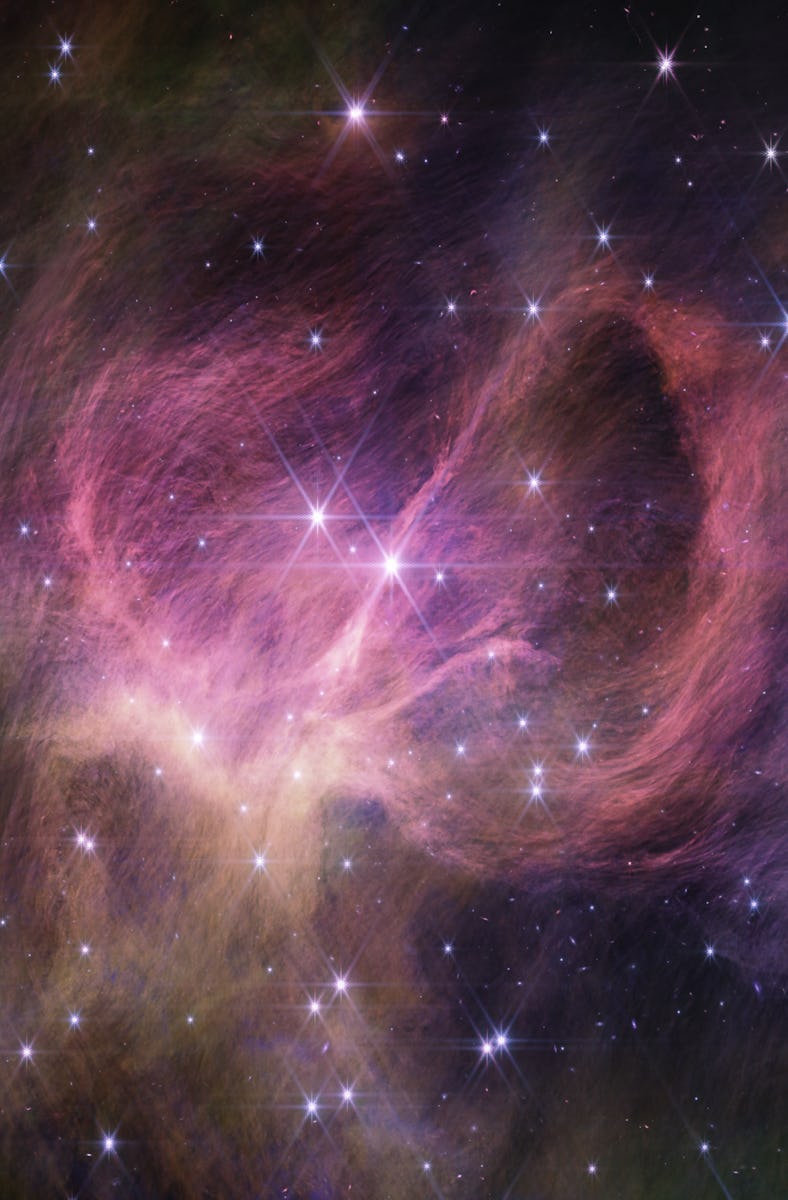Buried Deep Within This Gorgeous Webb Image are Three ‘Failed Stars’
Small stars still shine!

Astronomers who study brown dwarfs are a bit like partygoers on a limbo line, asking themselves, how low can you go?
Big stars get lots of attention, but so should the smallest stars. Even itty-bitty ones passed the critical hurdle to becoming stars, separating themselves from the contenders who were on the path to becoming ones, too, but fell short.
When enough gas comes together in space, it collapses under its own pressure. The aggregation of this material is a critical first step to making a star, which astronomers are keen to understand since stars are units by which the universe can be described and measured.
Star cluster IC 348, as seen by the James Webb Space Telescope. Astronomers searched this region for brown dwarfs, owing to its ideal conditions for finding the failed stars.
Once packed tightly into orbs, the gas is on the brink of becoming a star. These are called brown dwarfs. Sometimes, that’s as far as they get. It’s as if they’re in a perpetual waiting line to fuse hydrogen and create their own light, but never crossing the threshold to become stars.
But they were contestants, and that’s plenty interesting for astronomers investigating how stars form. When researchers used the James Webb Space Telescope (JWST) to explore the lower limits of star size, they found the tiniest brown dwarf to date. NASA and the European Space Agency (ESA) announced the finding on Wednesday.
“One basic question you’ll find in every astronomy textbook is, what are the smallest stars? That’s what we’re trying to answer,” Kevin Luhman, lead researcher of the new investigation and astronomy professor at Pennsylvania State University, said in the space agencies’ announcement.
Almost Stars
Brown dwarfs toe the line between hefty gas giant planets, like, say, Jupiter, and stars like the Sun.
In the new study, described in a paper published Wednesday in The Astrophysical Journal, astronomers found three brown dwarfs. The smallest one is now the tiniest free-floating brown dwarf ever discovered. It’s only three to four times more massive than Jupiter.
Finding one so small comes with challenges. Luhman and his colleague, Catarina Alves de Oliveira, chose to study a young star cluster, only about 5 million years old, because brown dwarfs, as NASA explained, “would still be relatively bright in infrared light, glowing from the heat of their formation.”
JWST played a major role. Its NIRCam (Near-Infrared Camera) and NIRSpec (Near-Infrared Spectrograph) instruments peered into the star cluster IC 348, located roughly 1,000 light-years away in the Perseus star-forming region, and gathered detailed observations.
Three brown dwarfs, less than eight times the mass of Jupiter, appeared in data from the James Webb Space Telescope. They are circled in the main image of star cluster IC 348, and shown in the detailed pullouts on the right.
“Webb’s infrared sensitivity was crucial, allowing the team to detect fainter objects than ground-based telescopes. In addition, Webb’s sharp vision enabled them to determine which red objects were pinpoint brown dwarfs and which were blobby background galaxies,” according to the space agencies.
Three Special Objects
The three objects are less than eight times the mass of Jupiter. Their free-floating characteristics suggest they formed on their own, and not as part of a solar-system disk like Jupiter, Saturn, Uranus, or Neptune. A chemical signature of two of their atmospheres suggests there are missing pieces to the brown dwarf story because brown dwarf models don’t predict the molecule's existence.
There’s a possibility these three aren’t brown dwarfs, but actually giant planets that were ejected from their home star system.
Longer surveys, more brown dwarf candidates, and expanding the search to the star-forming region’s outskirts may provide more answers.